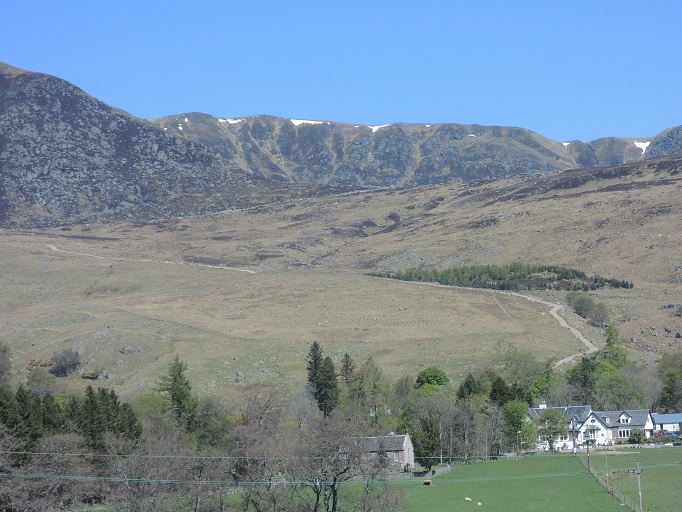
I was pleased to be quoted in Sunday Herald article “Call for crackdown on unregulated Scottish hill tracks” (see here) which was published at the weekend. The article contains some very interesting quotes from the the landowner and owner of the Glen Clova hotel, Hugh Niven, about the apparently unlawful road which is now subject to enforcement action by the Cairngorms National Park Authority (see here). This provides a rare insight into how landowners are trying to justify the damage they are doing to Scotland’s amazing landscapes.
Roads and jobs
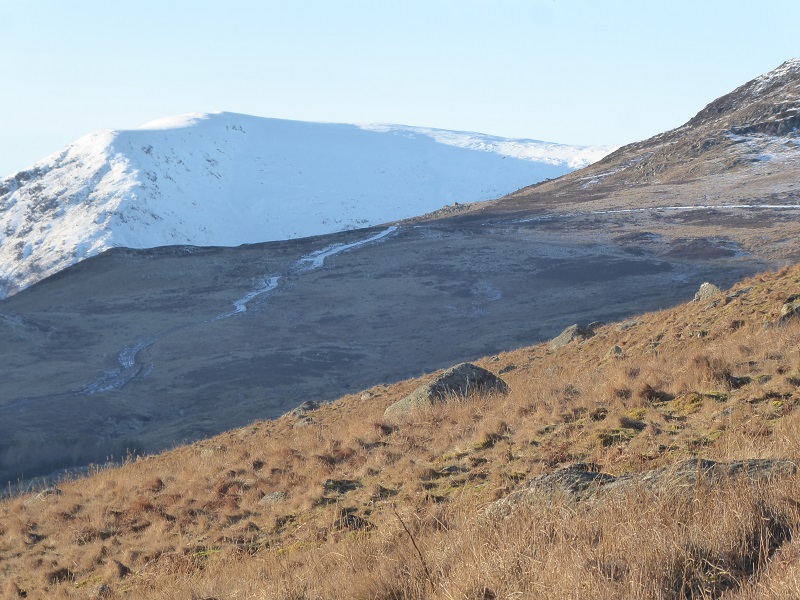
Sandra Dick, the journalist who wrote the article, deserves great credit for persuading Mr Niven to speak to the paper and quotes his views on the enforcement action as follows:
“My response is hardly printable” he says. “I feel as strong as I think its possible to feel. These people are so out of touch with reality. I employ 20-30 people,. If that track goes, then those jobs go”.
So, this 2km section of road supports 20-30 jobs? Or is Mr Niven threatening to sack 20-30 people and close down his business if the Cairngorms National Park Authority proceeds with enforcement action? If the latter, what does this say about Mr Niven’s fitness to own and manage land in the National Park?
The CNPA is not even requiring the lower section of road, which accesses the forestry plantation and pheasant feeders, to be removed. All it requires is that the “upgrade” to what it says was an existing section of track should be to a standard appropriate for a National Park. Yet even that appears too much for Mr Niven.
How many jobs are dependant on that lower section of road? Feeding pheasants, a couple of hours a week? The new forestry? Well fenced forest plantation don’t really need looking after, just the occasional check up visit, as once you plant the trees you can leave them for ten or more years until the first thinning.
Mr Niven goes on to make claims which seem to apply to the new upper section of road:
“Without it, we can’t safely get to our sheep, we can’t remove deer, we can’t run our tourism business”
This begs a number of questions. How does Mr Niven believe estates gathered in their sheep before the days of tracks All Terrain Vehicles? Answer – they employed shepherds who walked. How too does Mr Niven believe estates removed deer carcases before days of tracks and ATVs? Answer – by employing ghillies, who also walked, and by using ponies.
Follow Mr Niven’s argument to its logical conclusion and and every corner of the Highlands would need to covered with tracks. Mr Niven appears to have no understanding that the area has been designated a National Park and that the CNPA has a statutory duty to put conservation of the landscape and cultural heritage first.
Just why this track is essential to Mr Niven’s tourism’s business is unclear. Why cannot the pheasant and grouse shooters, if they are classed as tourists, walk up the hill like everyone else? Mr Niven seems oblivious to the fact that most tourists to Scotland are attracted by our outstanding scenery – hence the success of the North Coast 500. Whatever you think of hunting, a large proportion of shooters also value this scenery and would still come, tracks or not. Through their disregard for the landscape, Mr Niven and his ilk are threatening the very basis of tourism in the Highlands.
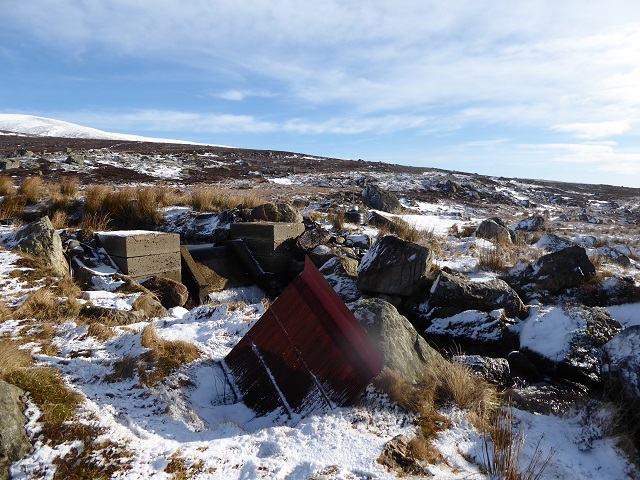
“I have a hydro scheme I have to service twice a week – I can’t pay someone to walk up there”.
Mr Niven then argues he needs to service the hydro scheme. So why then, didn’t he apply for Planning Permission for a new access road at the time the hydro was being constructed?
Hydro schemes happen to be highly profitable enterprises paid for by the general population through inflated fuel bills. Mr Niven’s hydro is not a separate company so I have been unable to find how much money it is generating for him. However, to get someone to walk up to the intake twice a week might take a total of four hours. I suspect that is a fraction of what it is generating in profits for Mr Niven each week. The issue, it appears, is not that Mr Niven can’t pay for someone to walk up there but that he doesn’t want to. Just as he would prefer not to pay for shepherds to gather his sheep. The fact is that, despite the protestations of Scottish Land and Estates, far from safeguarding the rural economy hill roads have enabled landowners to REDUCE the number of people they employ.
“Hillwalking doesn’t generate money or jobs”.
Mr Niven appears unaware of either the Visit Scotland survey in 2017 which found walking contributed £1.26 billion to the Scottish economy (see here) or of the many hillwalkers I have seen patronising the Glen Clova hotel. Perhaps others, like me, are now refusing to enter the place? A shame as its well documented that tourism is a far greater generator of jobs in the Cairngorms National Park than traditional land management.
Unfortunately, the issue of the Clova Estate hill roads is not something that I believe can be addressed by rational argument. The underlying problem is that a significant proportion of landowners see land ownership as conferring absolute rights and will oppose anything or anyone or tries to restrict their power to do as they wish. Hence, they don’t see the law as applying to them:
“I’ll fight this because I am 100% within my rights. I’ve done nothing untoward”.
Really? If the Scottish Government want to know why they need to tighten and clarify the law on hill tracks, they need look no further than Glen Clova.
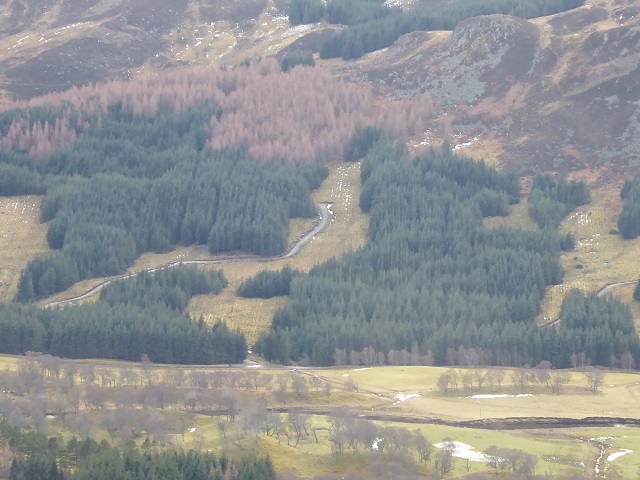
In drafting my post on the CNPA’s enforcement action I realised I had forgotten to report further newish hill road I had seen in the glen. One at least, across the glen from the Glen Clova hotel, which I visited in February, is on the estate owned by Hugh Niven and appears to be used for breeding pheasants. If so, it too should have required planning permission. I have been able to find no application or Prior Notification on the Park’s planning portal.
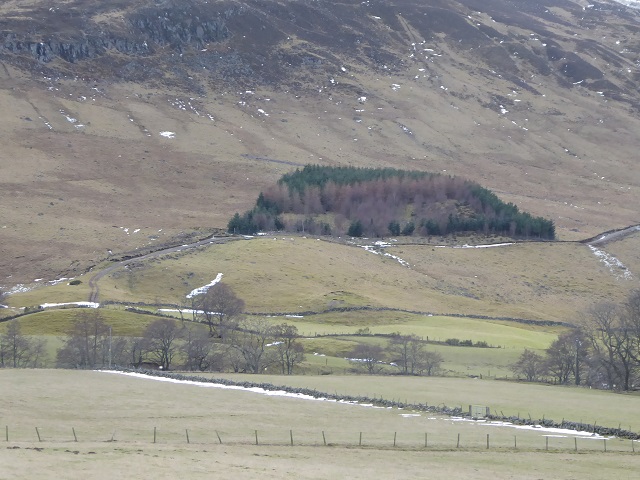
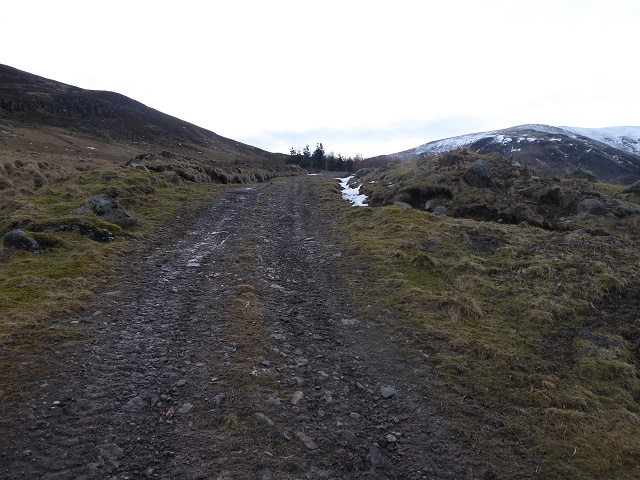
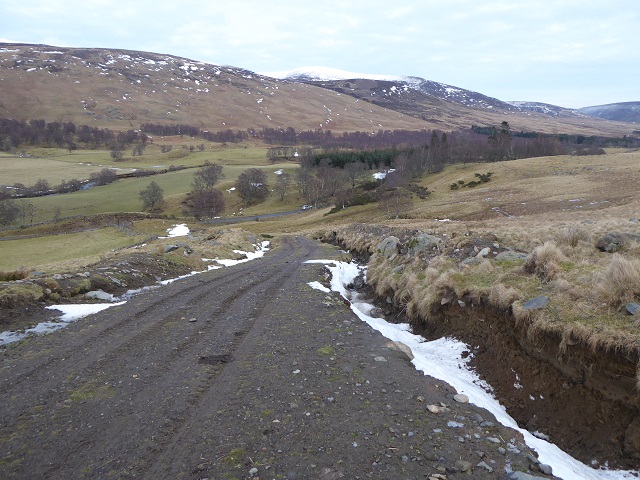

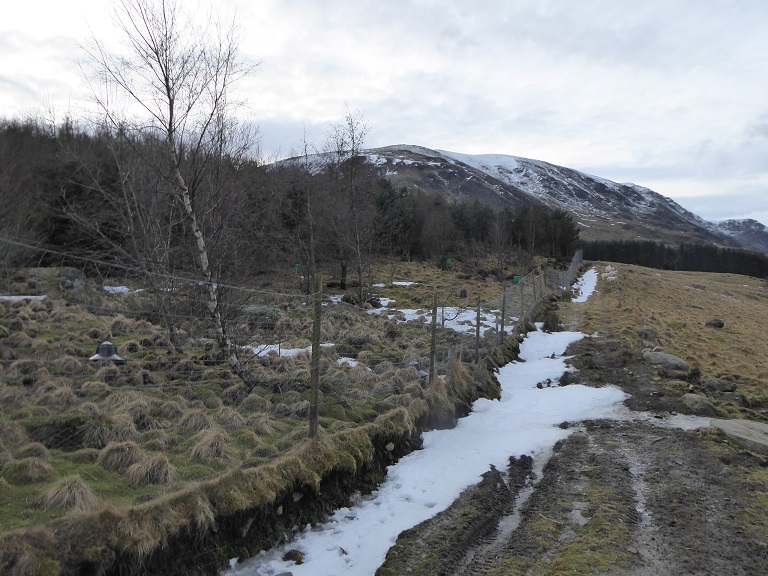
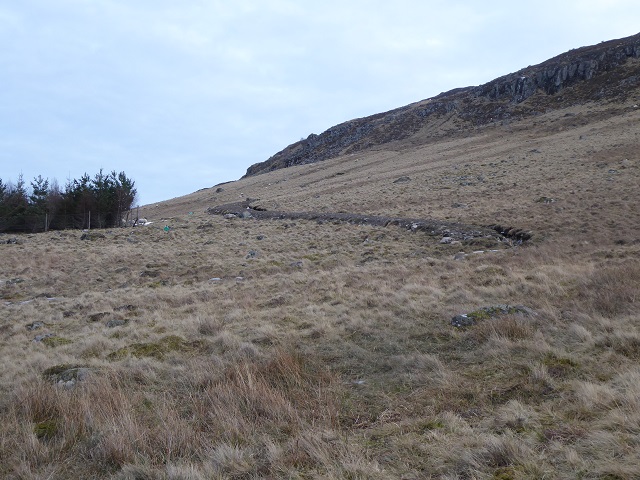
I am waiting to hear from the CNPA if they were aware of these roads and, if so, whether they have any information on when they were constructed and whether they might have slipped through as permitted developments under the Prior Notification system for forestry and agricultural tracks.
If they weren’t “approved” under the Prior Notification system, there is a three year limit on the ability of the CNPA to initiate enforcement action. In my view the Scottish Government needs to extend that from three years to ten years in National Parks and other protected areas to give Planning Authorities sufficient time to respond. The CNPA has spent two years attempting to negotiate with Mr Niven about the Glen Clova Rd. This has tied up resources and hindered timeous action being taken against other unlawful tracks. The CNPA is swamped with cases and cannot possibly deal with them all within current time periods. Scotland should not be tolerating the willy nilly destruction of the landscape by irresponsible landowners and planning law needs to change to enable damaging new roads to be removed for a reasonable period after they were first constructed.
If that also means declaring certain landowners as unfit to manage the land and removing the land from their ownership – as I argued in my last post on Glen Clova – so be it. Mr Niven’s remarks and attitudes, as quoted in the Sunday Herald, strengthen the argument for our National Park Authorities being given powers to take over land in the public interest.
NK’s article is superb in its clarity and weight of argument. I too try to avoid using the Clova Inn not only because of their unseemly high prices which many hillwalkers find obstructive too but now because of the owners’ blatant mis-appropriation of land for simply growing his business. I have ‘shared’ the article widely across my network but it has stalled on the MTA group as it has yet to be ‘approved’….I await their decision and hopefully it wont be withdrawn because of the article’s clear amalgamation of politics, the environment and land ownership.
I see landscapes that have been stripped of their natural tree cover, fields cultivated for sheep and cattle, forestry plantations. In fact everywhere evidence of human activity on the landscape. So why the fuss about the tracks?
Because unspoiled landscapes and wild land matters to many people – and organisations such as the John Muir Trust have commissioned research which shows a very high percent of the population value landscapes which appear wild. These unspoilt landscapes are not unchanging but are increasingly being destroyed. Hence the fuss. I accept you appear to have different values but hope you accept other people have a right to make a fuss.
You should go and see the forestry plantation after harvesting it looks like a bomb has gone off!! this is just a small road which eventually will blend in the landscape.